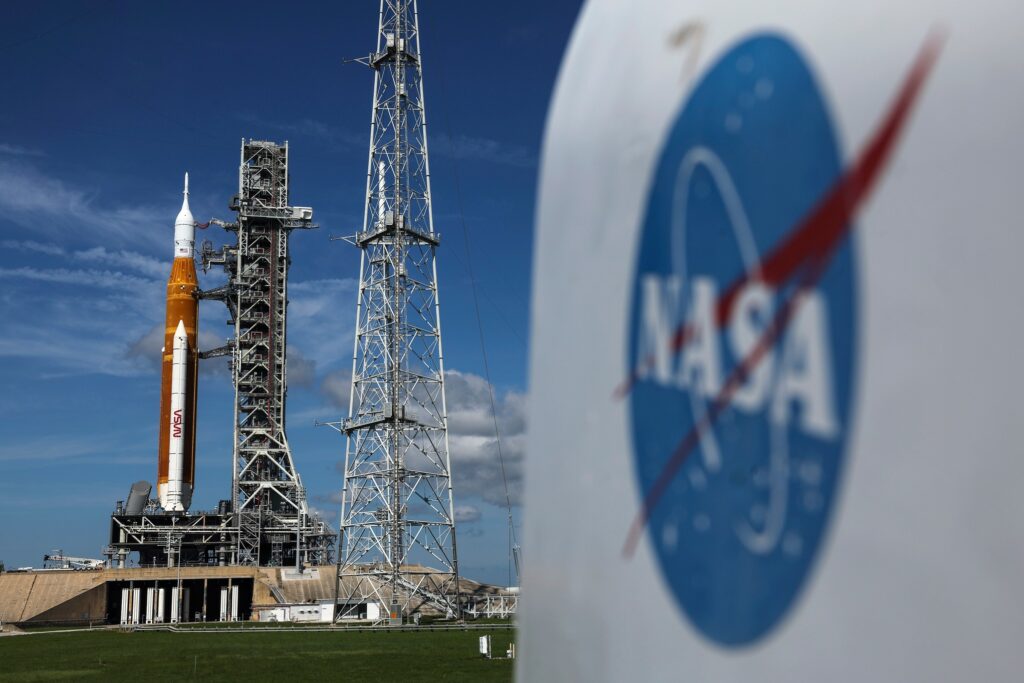
Heavy Rain, Flooding, and Chance of Severe Weather Staring Down the Southern U.S.
January 22, 2024
Posted: September 1, 2022 2:09 pm





On August 29, 2022, NASA’s new lunar rocket was scheduled to take off from the Kennedy Space Center. However, issues with the engine’s fuel system kept it grounded, and the public is wondering when and if it will relaunch.
The rocket goes by a few names. In its most practical form, it’s a space launch system. But SLS isn’t the most impressive acronym for the most powerful rocket in the world. The name of the mission is Artemis I, and crews have nicknamed the vehicle the mega moon rocket.
Artemis’ maiden voyage is a milestone, facilitating the establishment of a human presence on the moon. NASA has been largely absent from lunar exploration for the past 50 years. If it gets off the ground, this mission will send the Orion capsule into lunar orbit before returning it to Earth.
Several obstacles delayed Monday’s launch. Lightning had struck the rocket pad the previous Saturday. In the early hours of August 29, it threatened to strike again.
Five and a half hours before the rocket was scheduled to take off, the team reported that one of the four engines wasn’t cooling properly. Live Science says that fueling problems also hindered the April dress rehearsal for the launch. As they did in April, crews are also repairing a liquid hydrogen leak at the launch pad. A faulty sensor might also be to blame.
Teams are investigating the problem. A test that was conducted last year achieved positive results by cooling the engine 30 minutes earlier. But if the fault lies with the sensor, the launch could be delayed for months.
NASA is attempting to come up with workaround options for potential problems. For example, engineers might be able to evaluate the engine’s temperature without relying on the sensor. They continue to analyze the plan to ensure that launching on Saturday would be a safe, reasonable decision.
NASA is attempting to set the stage for more in-depth exploration of the moon and Mars. The Orion is designed for human travel and will fly farther from Earth than any passenger spacecraft has. Although the Orion capsule won’t contain passengers this time, it will evaluate many elements that could affect astronauts and equipment on similar missions.
The Orion was sent to space on a test flight in 2014, but this is the first time it will be sent into orbit using the space launch system. This mission is estimated to take 42 days, during which the capsule will travel approximately 1.3 million miles.
The test flight will assess the capsule’s ability to withstand exposure to a high-radiation environment for a month. It will also test the heat shield, which protects the astronauts as they hurtle back into the Earth’s atmosphere at 25,000 miles per hour.
A successful flight will pave the way for a crew to travel to the moon on the Artemis II, a mission which is loosely scheduled for 2024. That flight would orbit the moon without landing on it. Some of the goals are to bring the first woman to walk on the moon with Artemis III and spend more time in space to train for Mars missions.

NASA is aiming to launch the mega moon rocket during a two-hour window that begins at 2:17 p.m. on September 3, 2022. Typically, the countdown begins 46 hours and 10 minutes before the launch. However, many of the launch configurations are still in place from Monday. Therefore, the countdown will begin at 4:37 a.m. on Saturday. NASA TV will broadcast full coverage of the event beginning at 5:45 a.m. EDT.
Thunderstorms may hinder the mega moon rocket launch, but there is a 60% chance of favorable weather. Another minor issue could push the big day to September 5. But if other equipment malfunctions or major issues arise, NASA will have to return the rocket to its Vehicle Assembly Building for further assessment.

January 21, 2024

January 19, 2024

January 18, 2024